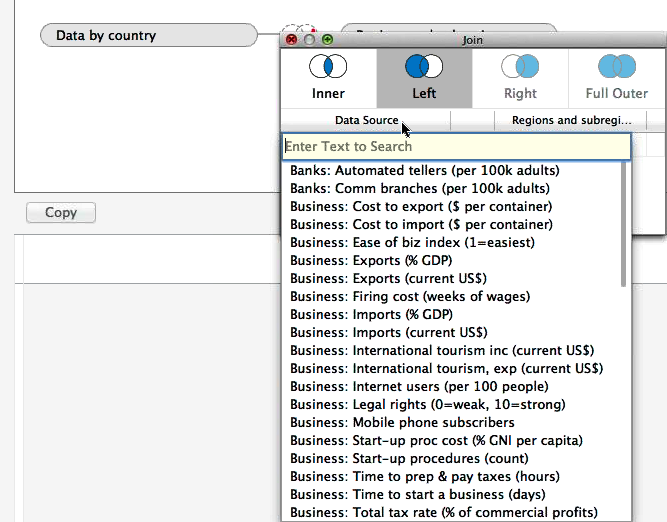
The Storytelling Mandate of Big Data

Data has become a natural resource, pouring from every nook and cranny in our digital universe. But data by itself is useless, requiring humans or machines to mold it and refine it and make something useful from it. One way we’re deriving benefit from big data is through the power of storytelling, which is the focus of Tableau Software‘s latest development effort.
We collect data and use data effectively to enhance our experiences and tell stories, says Ramesh Jain, a UC Irvine professor and big data researcher. “But this requires understanding relationships among disparate data items. And that is where the importance of Big Data really lies,” Jain writes on his blog.
Data-powered storytelling can be broken down into two categories: micro stories and macro stories. In their 2013 piece on the topic, Jain and Microsoft researcher Malcolm Stanley theorize that micro stories can be as simple as clicking the “like” button on Facebook, posting a picture on Instagram, or posting a video on YouTube. “Micro stories reflect a person’s experience with just one small event–really a moment in the event,” they write.
Mega stories can be generated by combining micro stories into a bigger narrative. “Mega stories tell a story that could only be created by considering a large volume of relevant events in big data,” Jain and Stanley write. “All these events must be selected and aggregated based on the goal of the storyteller.”
Tableau is doing just that with the new Story Points feature in version 8.2 its flagship software which ships at the end of June. The new feature gives users the capability to harness and present a variety of data in ways that aren’t possible with tabs in a spreadsheet or dashboards in a visualization tool.

Story Points guides a user through the process of telling a data-driven story using a series of individual visualizations.
“Dashboard and reports will tell you the ‘what’ in your data. Stories can tell you the ‘why,'” vice Tableau’s vice president of product marketing Ellie Fields tells Datanami. “Stories give you a way to create a narrative rather than just dropping a lot of data on someone and expecting them to just swim through it.”
Visualization tools like Tableau’s have exploded in popularity because they let users explore data in an intuitive way. Instead of ingesting and comprehending rather raw numbers and letters arranged in rows, the software transforms the data into any number of charts and graphs. Tableau invests a lot into creating tidy-looking visualizations, and that effort has been rewarded with a revenue figure that’s grown 6x since 2010.
Tableau’s Story Points takes those visualizations to the next level by helping users string multiple visualizations together to tell a story about the data. Think of it as PowerPoint with a powerful data visualization tool on the back end that allows users to drill down to the data that’s driving the visualization.
We often hear that our nation needs more STEM (science, technology, engineering, and math) skills to compete in the 21st century. The STEM gap certainly seems big considering the huge unmet demand for data scientists and top-level data analysts. But some in the big data community argue that what’s really needed is a blend of data science and basic human skills, like storytelling.
“Our challenge as data scientists is to translate this haystack of information into guidance for staff so they can make smart decisions,” Jeff Bladt and Bob Filbin, data scientists at dosomething.org, wrote last year in the Harvard Business Review. “We’re tasked with transforming data into directives. Good analysis parses numerical outputs into an understanding of the organization. We ‘humanize’ the data by turning raw numbers into a story about our performance.”
The bigger the data, the more important storytelling becomes. “Small data is grokable,” Tableau’s Fields says. “If I give you five rows by four columns, you can figure out what was in there fairly quickly. That gets much more difficult with big data. With big data, the necessity to tell a story is greater because there are so many potential places you can go, so many potential lines of reasoning you can pursue, that you need a way to organize and present data.”
Figuring out what story to tell, however, is not something that can be automated. Visualization tools like Tableau’s can help users explore their data and find the bits and pieces that are interesting, which can then be linked together with the Story Points feature. The tool doesn’t prevent users from making logical errors in their stories. It’s up to the users to prove their points with data, and not to confuse correlation with causation. The data science part is still important, even as data scientists find ways to make their work more approachable.
By the way, with version 8.2, Tableau is also adding support for Mac OS, a long-requested feature by its user base. The Mac and Windows versions are identical, except for the lack of support for OLAP data in the Mac version. The software’s mapping and GIS function has also been enhanced. The company is now running its own map servers across the globe, which provides people all around the world with full and speedy access to all 48 levels of zoom supported in the software.
Maps make an excellent starting point for stories about data, especially considering the huge amount of location-aware data organizations are now collecting. In the future, we can expect to see Tableau takes Story Points in new directions, and help us expand on the unfolding story of big data.
Related Items:
What Color Is Your Data? Inside the Science of Data Visualization
Tableau Embraces R with Version 8.1 Update
Tableau Throws a Brick at Traditional BI




























